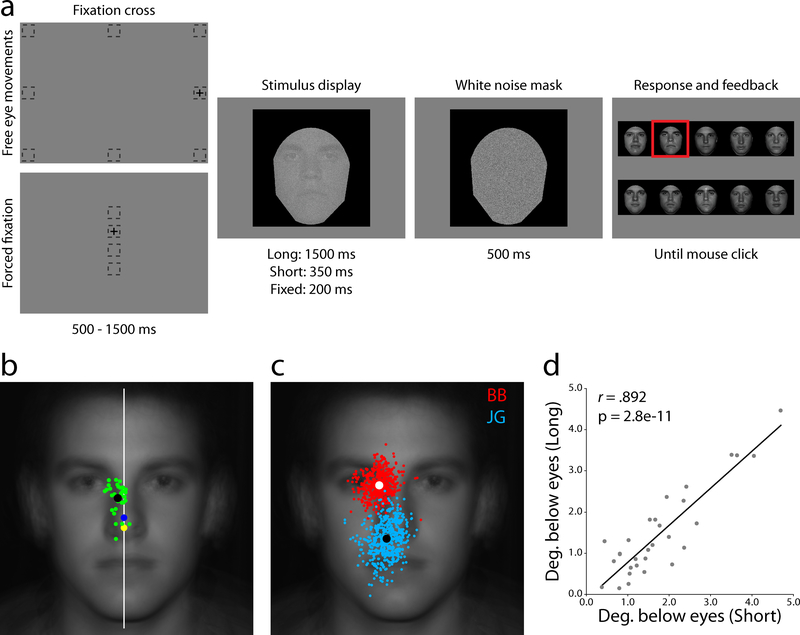Fig. 1.
Task structure and free eye movements. (a) Participants began free eye movement trials by fixating outside the impending stimulus area, while forced fixation trials required continuous gaze at one of four specified locations along the vertical midline. (b) Average landing point of the first saccade for each of the thirty observers (green dots) and the group average (black dot). The white line represents the vertical midline, showing a consistent bias toward the right side of the face. The geometric center of the visible face area (yellow dot) and the black frame (blue dot) show that observers do not use a central targeting strategy. (c) All saccades from two example observers, BB (red, an “eye-looker”) and JG (cyan, a “nose-looker”). (d) Consistency between the Long (1500 ms viewing time) and Short (350 ms) free eye movement conditions showing that the first saccade does not depend on overall stimulus presentation time.

